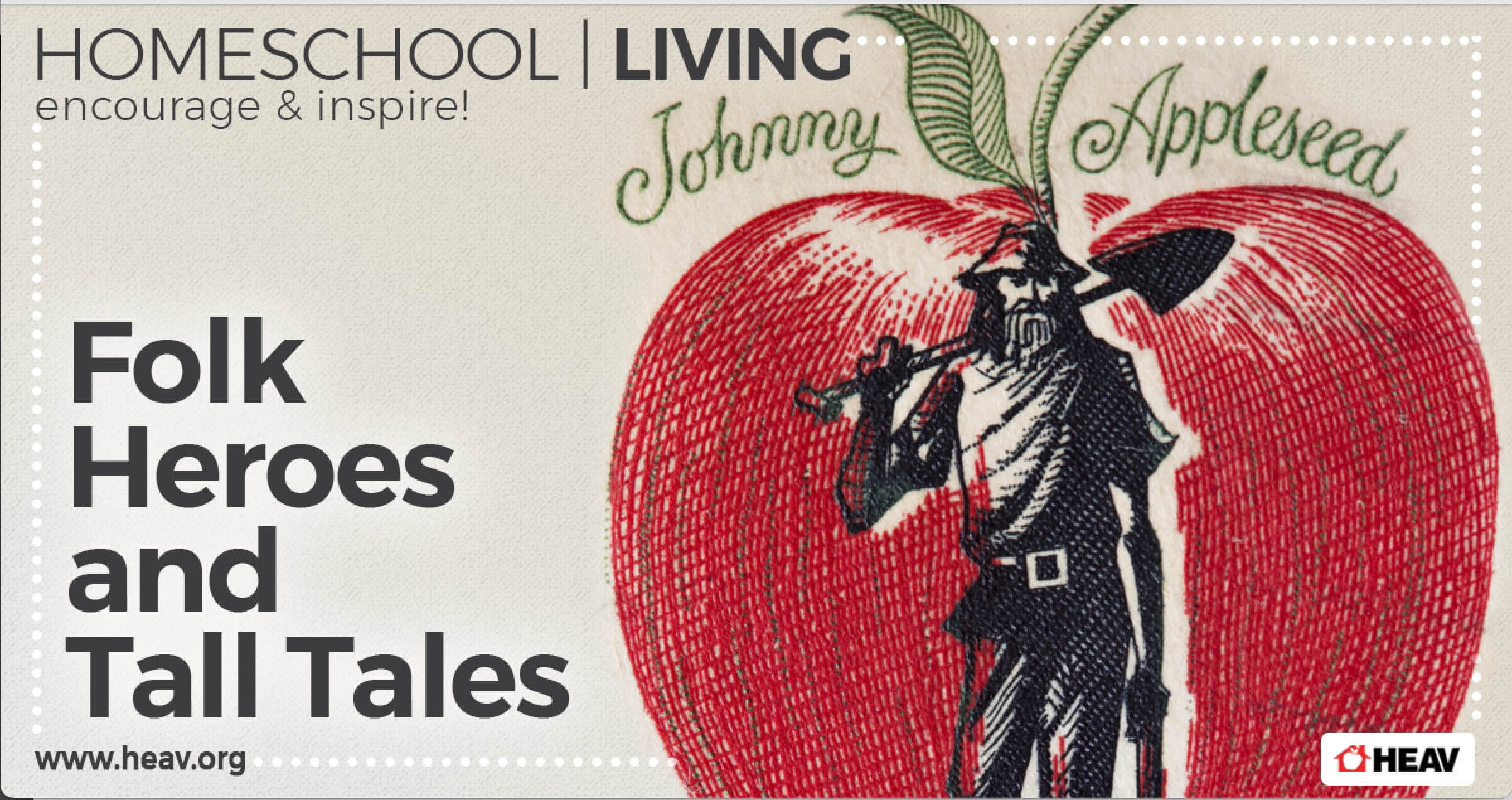Folk Heroes and Tall Tales
You can draw inspiration for your homeschool unit studies through a variety of historical events and commemorations. March 11 is National Johnny Appleseed Day, so it’s a fun opportunity to spend some time researching not only the legendary John Chapman but to explore the rich history of American folklore and legends. Check out this Homeschool Living for ideas on bringing folk heroes like Johnny Appleseed, Paul Bunyan, and John Henry to life in your own homeschool study of folk heroes and tall tales.
This Johnny Appleseed unit study from Heart and Soul Homeschooling features a variety of resources including book suggestions, ideas on incorporating your study on Johnny Appleseed into various subjects, and how to take lessons from the life of this folk hero and apply them in ways that are relevant to us now.
If you want to go further and segue from Johnny Appleseed into science, math, and home economics lessons, check out this Homeschool Living, “An Apple a Day Makes a Homeschool Unit Study.”
Another familiar figure in American folklore is Paul Bunyan. This blog post from Our Homeschool Forum shares ways to draw lessons in language arts, geography, history, math, and even character development from just this one tall tale.
Why do we call them “tall tales” anyway? Wonderopolis answers that question with some fun facts and resources, and an invitation for students to write their own tall tales.
Folk Heroes: The Lore, Legends and Lives
Challenge your students to delve deeper into American folklore by exploring and learning more about a folk hero they haven’t heard of or don’t know much about. This list of nine legends of American folklore is a great starting place!
But why study folktales and legends when there isn’t always much–if any–factual information to learn? Folktales are much more than the history they exaggerate. A culture’s legends and myths share insight into its history, people, and values that can be hard to empathize with and relate to through cold, hard facts. They’re also a wonderful way to jumpstart and encourage a child’s imagination, and are a great way to introduce literary elements like hyperbole, character, and conflict to young readers and writers. Check out this article from Learning Through Literature for some great reasons to include folklore studies in your homeschools.









